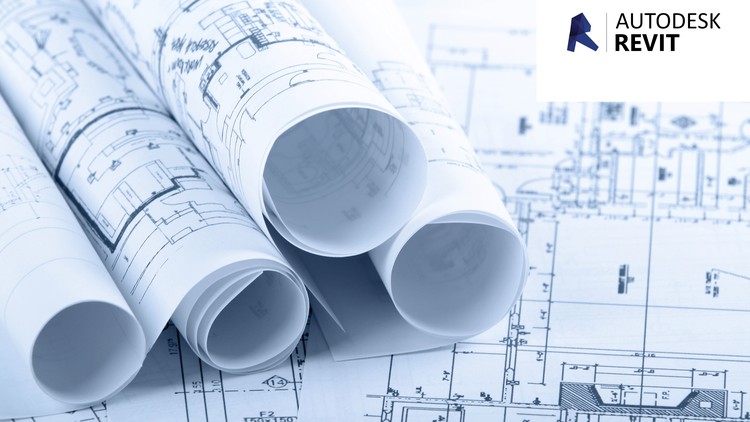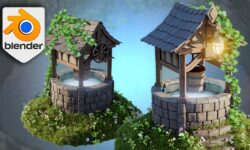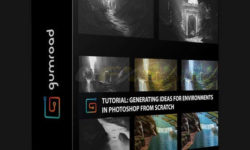Revit Architecture II Course – Complete Intermediate Training
Release date:2019, June
Duration:19 h 33 m
Author: Webelocity Designs
Skill level:Beginner
Language:English
Exercise files:Yes
What Will I Learn?
This Intermediate course will lead the user to Master intermediate level techniques and create a variety of detailed building projects with the world’s leading Building Information Modeling software, Revit Architecture.
Covers intermediate topics such as advanced annotation methods, door and window schedules and basic site modelling tools (including topographical surfaces, basic structural elements, camera and perspective view creation, rendering, lights and materials)
You will get greater insight into the project at any point in its lifecycle, BIM helps you to improve accuracy, efficiency, and productivity, resulting in time and cost savings
Learn how to work within the BIM process to effectively create and document a full range of building types (including residential buildings, small commercial buildings and multi-storey towers with custom curtain walls)
Upon successful completion of this course, the students will have reliably demonstrated the ability to: Create a full residential sheet set in electronic format. Create Component Families in the Family Editor Create and modify mass families in the Conceptual Design environment. Apply surface division and rationalization techniques to conceptual models. Develop building models from conceptual masses.
You will obtain significant value-added benefits like faster project approvals, more predictable outcomes, sustainable design and analysis services, and improved collaboration and information sharing for integrated project delivery strategies
Project creation, navigation and display concepts, designing with components, working with laves, creating and editing walls, adding doors and windows, creating floor and roof objects, working with view properties, instance and type parameters, loading and modifying family components, adding dimensions and annotations, adding and modifying drawing sheets, and plotting procedures.
Engineers can increase coordination with architects and other engineering disciplines, improving the reliability of their designs.
Contractors can make sure that construct-ability issues are flagged early on when changes are less expensive to make.
Architects can produce more accurate designs with fewer errors, less waste, and closer alignment to the owner’s vision.
Also learn how to create custom content within the Revit family editor, create conceptual massing studies, use structural tools and generate photo-realistic renderings of building projects.
Ultimately, YOU will be able to use the models far into the future as the basis of a comprehensive facilities and asset management program
Requirements
Complete Intermediate Training: Beginners / Previous experience in Revit Architecture is necessary.
PDF files are available in every Lesson, allowing you to follow along with course instructions.
PDF Files have detail course instruction steps, it is recommended to read all files for Revit Architecture II Course.
This Course Contains 12 separate Lessons covering basic to advanced concepts in the latest versions of the worlds most popular and versatile BIM Software.
We recommend to complete all 3 Revit Courses to achieve level of “Revit Architecture Certificate”
Description
Revit Architecture II Course Complete Intermediate Training
This course is also designed for those people interested in advancing their employment opportunities.
This Complete Intermediate Training course will lead the user to Master intermediate level techniques and create a variety of detailed building projects with the world’s leading Building Information Modeling software, Revit Architecture.
Revit Architecture II Course- Covers intermediate topics such as advanced annotation methods, door and window schedules and basic site modelling tools (including topographical surfaces, basic structural elements, camera and perspective view creation, rendering, lights and materials)
Assignment 1 – The first assignment covers all material in the first 4 lessons
Assignment 2 – The second assignment covers all material from lesson 5 to lesson 8.
Assignment 3 – The third assignment covers all from lesson 9 to lesson 12.
Upon successful completion of this Revit course, the students will have reliably demonstrated the ability to:
Create a full residential sheet set in electronic format.
Create Component Families in the Family Editor
Create and modify mass families in the Conceptual Design environment.
Apply surface division and rationalization techniques to conceptual models.
Develop building models from conceptual masses.
What Is BIM?
Unlike CAD Software, which uses software tools to generate digital 2D and/or 3D drawings, BIM facilitates a new way of working: creating designs with intelligent objects. Regardless of how many times the design changes—or who changes it—the data remains consistent, coordinated, and more accurate across all stakeholders. Cross-functional project teams in the building and infrastructure industries use these model-based designs as the basis for new, more efficient collaborative workflows that give all stakeholders a clearer vision of the project and increase their ability to make more informed decisions faster.
With BIM, the model is actually a complex database and the room is a database element that contains both geometric information and nongraphic data. Drawings, views, schedules, and so on are ―live views of the underlying building database. If designers change a model element, the BIM software automatically coordinates the change in all views that display that element—including 2D views, such as drawings, and informational views, such as schedules—because they are all views of the same underlying information.
Mission
Webelocity Designs, is an integrated practice of architecture, engineering, designers and construction professionals personally invested in delivering creative and practical built environments that enrich communities.
Core Values
Quality
We are committed to ongoing quality improvement initiatives to ensure we deliver solutions that meet our clients’ expectations of quality and value. Our dedication to project success influences everything we do and ensures our clients are satisfied, and that we enjoy mutual success.
Client Focus
We want every client to receive the best service we can provide and for them to feel we have contributed real value to their project. We want our clients to be confident in recommending our services to others.
Integrity
We strive to work ethically in all areas of our business and in our interactions with our people and everyone we meet in our communities and beyond.
#revit 2019 #autodesk #revit #bim #buildinginformationmodelling #architecture #revit architecture 2019 #revit course #Revit Architecture I Course Complete Beginners Training
Who is the target audience?
Complete Intermediate Training.
This great course is for the students who wants to become Revit Architecture Experts.
Autodesk Software Users that wants to gain knowledge and skills in Revit Interface.
A chief Revit Architecture Certificate Level.
We recommend to complete all 3 Revit Courses to achieve same level of the “Revit Architecture Certificate”





 Channel
Channel






Hi online-courses.club team
plz i need help with video 29
i can`t download it and the video doesn`t working
plz can you fix it soon
i download all videos without problems except video number 29